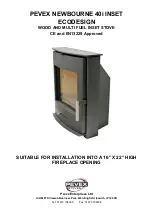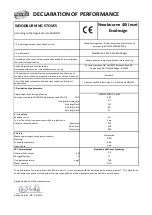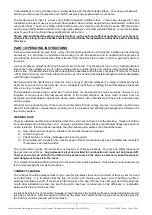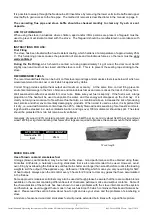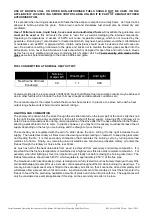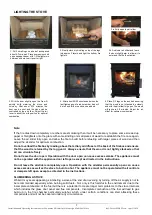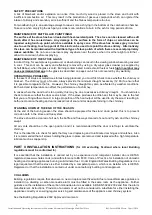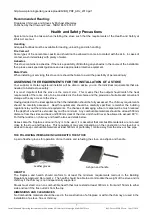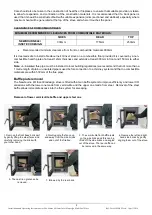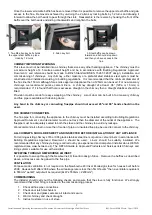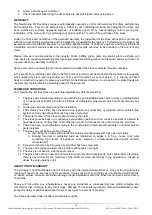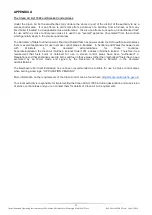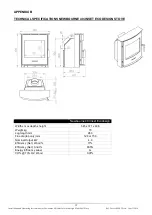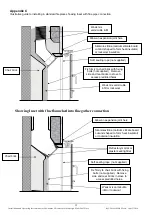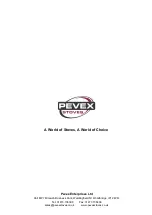
7
Installation and Operating Instructions for Newbourne 40i Inset Inset Ecodesign Multi Fuel Stove
Ref: Pevex1030/AH/ver1: 1 April 2019
http://www.planningportal.gov.uk/uploads/br/BR_PDF_ADJ_2010.pdf
Recommended Reading:
Fireplaces Chimneys and Stoves by Michael Waumsley.
Published by the Crowood Press. ISBN1 86126 746 0
Health and Safety Precautions
Special care must be taken when installing the stove such that the requirements of the Health and Safety at
Work Act are met.
Handling
Adequate facilities must be available for loading, unloading and site handling.
Fire Cement
Some types of fire cement are caustic and should not be allowed to come into contact with the skin. In cases of
contact, wash immediately with plenty of water.
Asbestos
This stove contains no asbestos. If there is a possibility of disturbing any asbestos in the course of the installation
then please seek specialist guidance and use appropriate protective equipment.
Metal Parts
When installing or servicing this stove care should be taken to avoid the possibility of personal injury
ASSESSING THE REQUIREMENTS FOR THE INSTALLATION OF A STOVE
Your supplier or Hetas registered installer will be able to advise you on the individual requirements that are
needed to install a stove safely.
It is most important that the stove is the correct size. This means that the output should match the heat
requirements of the room. Also, to be considered is the fuel choice and the provision of suitable and convenient
storage with easy access to the stove.
Having decided on the ideal appliance then the installation should be fully assessed. The chimney requirements
should be carefully assessed. Hearth requirements should be carefully specified, remember the building
regulations lay out the minimum requirements. The chances of damaging a floor or carpet will be much reduced
if the depth of a hearth is extended beyond the minimum. Any combustible materials should be at least 500mm
distance from the sides and back and 800mm clear of the door and should never be allowed to exceed 80 °C.
For further advice on chimney and hearth also see details below.
Assess also the fireplace surround if any is to be used, it is essential that combustible materials are not used
close to the stove and flue pipe. This requirement may vary depending on the construction of a stove but is
advised to keep combustible materials at least 500mm or preferably 1 metre away from the stove or flue pipe.
THE FOLLOWING ITEMS ARE INCLUDED WITH THE STOVE
A pair of leather gloves for operation of door handle and refueling the stove, an ashpan and handle.
HEARTH
The fireplace and hearth should conform to at least the minimum requirements laid out in the Building
Regulations Approved Document J. The hearth should be able to accommodate the weight of the stove and its
chimney if the chimney is not independently supported
Stoves must stand on a non-combustible hearth that must extend at least 300mm in front and 150mm to either
side and rear if the flue outlet is from the top.
DIMENSIONS AND CLEARANCES
No Combustible materials should be used in the construction of a fireplace or within the chimney or used in the
installation of a stove, flue or chimney.
Ashpan and handle
Leather gloves
Leather gloves

